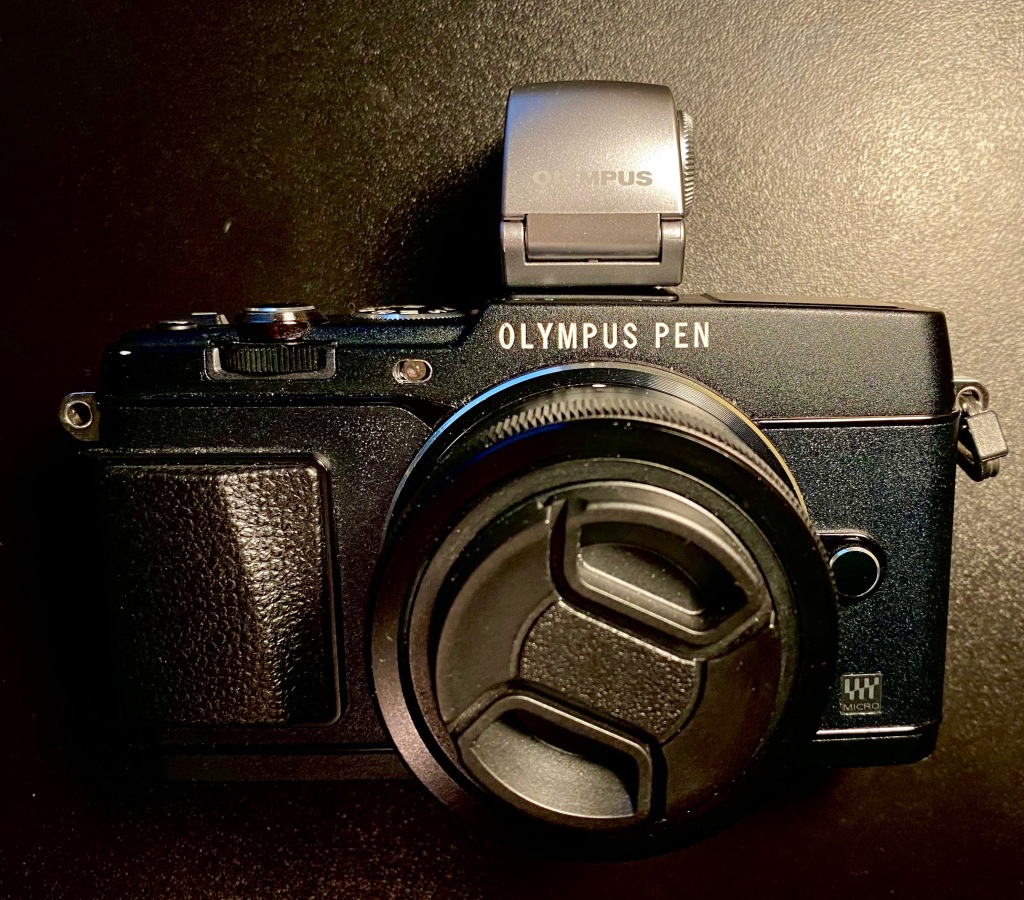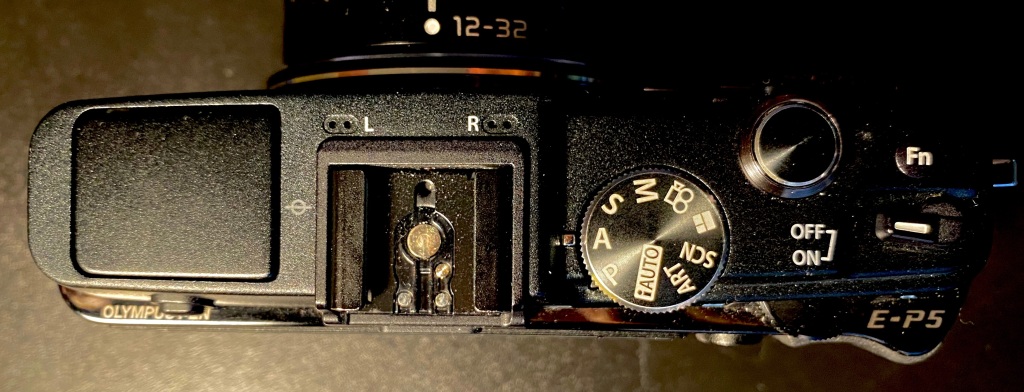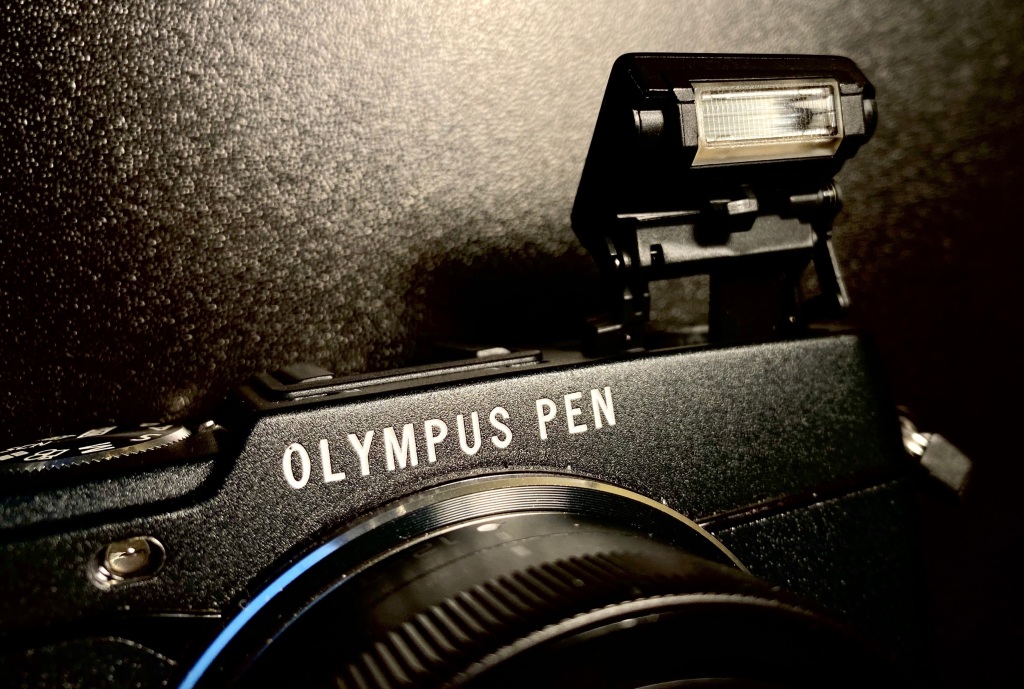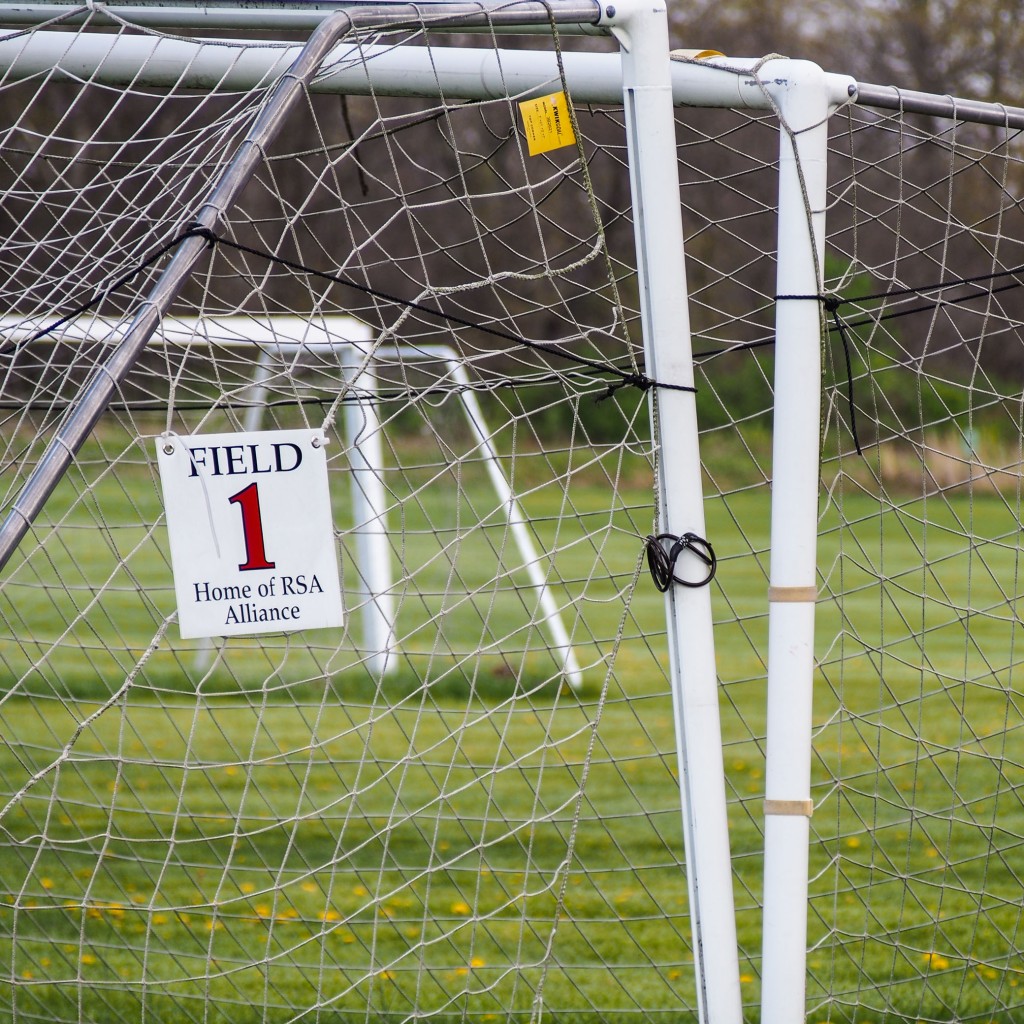
With VF-3 Viewfinder
Introduction
Early on in my exploration of Micro Four Thirds (m43), I liked the concept of the PEN camera. One of my non-negotiables was the requirement that the cameras I use have to have a viewfinder of some kind. I looked hard at the OMD EM5 as well as the PEN EP5, The clincher for going to the EM5 was that it had a built in EVF and was more cost effective to get that than the EP5 with the VF-4 viewfinder add on.
During one of my frequent searches around the third party used gear sellers and personal forums, I noticed that the PEN EP5 prices used were in a very reasonable range. Released in May 2013, it is not unreasonable now to find the $1000 new EP5 for under $200.
There was still the issue with the lack of EVF. Looking around I found a used Olympus VF-3 for under $100.
Having loved the OMD EM5 and the PEN EP5 being a close relative, I was sure that there would be a lot to love about it. Let’s go on my review journey and you can see how Ihot along with it.
I’m a fan of the rangefinder styled camera bodies. The Olympus PEN-F, the Fuji XE series, X100 line, and XPro lines all tick the boxes for me aesthetically.

Tech Stuff
Body
Right off the bat, the camera body has a premium feel. The body panels are solid and it has a nice weight to it. Not too heavy and not too light.
The buttons have a different feel from the ones on the EM5. Because of the weather sealing on the EM5, the buttons on it were rather mushy and some times you were not sure that you actually pressed the button fully to engage.
The EP5 is not weather sealed, so the buttons have a more positive click to them and lack the mushy feeling relative to the EM5.
The power switch is in a different position than msot other cameras. Initially, I thought it was a bit weird, having it on top of the camera body on the right side just behind the function button. After having used it for a while, I think I almost prefer the top dial power switch as found on the Olympus PEN-F….although the E-P5 allows for powering on with one hand versus the two handed operation of the PEN-F.

I won’t say that the power switch placement on the E-P5 is bad, persay…but definitely different and took me some time to get used to where it was. IF I had to pick an alternate placement for the power switch that was not around the shutter release, I think I’d have to go with the original EM5 Mark 1. Bottom right corner and you could flick it on and off with your thumb.
Dials. The top mode dial does not have a lock of any kind on it, but given its placement, I have not accidentally bumped it out of the position that I set it to. The front and rear command dials are nice and clicky. I setup the front and rear dials to be similar to how I use my Nikon cameras in aperture priority mode. That is to have the aperture value changed from the front dial and the rear dial is tasked with exposure compensation.

Shutter Release – The shutter release has a positive feel between activating the auto focus and actuating the shutter.
Rear LCD – It is very good. The colors and contrast are true to the scene. The touch actuation of the shutter release is just as good here as it is on the newer cameras. Olympus got this right from the get go and it is a great feature to have when you need it.
As good as the rear LCD might be, I still am not a fan of shooting with it full time. Hence, I purchased the VF-3. Why not go for the VF-4? Right now, it is still cost. I as not sure if I wanted to keep the EP5 long term, so I did not want to invest too much money into higher end items from the get go.
Flash
The E-P5 has a built in pop-up flash. The button to activate it is on the back of the camera body. The flash cannot be tilted back for bounce, but is there and can be used for fill if needed.

Viewfinder / EVF
As mentioned above, I did not want to invest a lot of money into the EP5 until I was sure that it was something I would love to use and intended to keep long term.
The VF-3 was a great price used. It has a positive lock onto the hot shoe.
The Good – it satisfied the basic need I have for the EVF – good framing and shooting information in sunlight. It also does a good job on confirming that you nailed auto focus.
The Not So Good – colors are not true like the rear LCD, being pailer and more washed out.

It’s been suggested to me that the VF-4 is much better. That will be a consideration for the future. However, for now, the VF-3 is fine for what I need at the moment.
Lens Line Up
The EP5 is capable of using all the great price and zoom lenses in the m43 lineup. I tested this camera with the Panasonic 12-32/3.5-5.6 OIS lens and the Olympus 40-150/4-5.6R.
I’ve had both of these lenses in the past and know just how well they perform!
I’ve also kept my Nikon to m43 Fotodiox adapter for using manual focus lenses. I’ll probably take that for a spin as well and see how the E-P5 and focus peaking perform on them.

1/800, f/3.8, ISO 200 @ 15mm
Performance
I’ve never had an issue with the Olympus line of cameras. They have all performed well. The EP5 is no different.

1/320, f/4.7, ISO 200 @ 20mm
Overall System Performance
System performance and speed are all top notch. I never have to wait on the camera.
The camera fires up quickly. The touch screens are very responsive. The Olympus menus are not the most intuitive, but they are not the worst I’ve ever used either. Once you get used to them, they get to make a lot more sense.

1/320, f/5.6, ISO 200 @ 12mm
Autofocus
Single Point
The auto focus performance here is top notch in single point mode. Positive and sure with both lenses tested. Only is severe back lighting is there an issue with the auto focus not being able to grab a positive lock. This was not unexpected, as this is behaviour we have seen in other and even newer Olympus cameras
This is the mode I use most often. I pick the focus box size that is smaller.

1/2000, f/5.6, ISO 640 @150mm
Continuous
Olympus does not have a good reputation for their C-AF with cameras that do not have a phase detect auto focus (PDAF) enables sensor. The EP5 is really no different and I recommend not getting or trying to use this camera to track motion. If you need that, get the OMD EM1 line or the EM5 Mark III, which all have PDAF sensors in them.
Manual Focus
I will use manual focus on occasion, but usually only with adapted manual focus lenses. The EP5 has magnification and focus peaking. I usually like to use peaking with yellow, however, teh EP5 only has white and black. I’ve defaulted to using white as my peaking color.
It is good enough to get the job done.

1/320, f/5.6, ISO 500 @ 150mm
Battery Life
Power wise, it meets and exceeds the CIPA rating of 330 shots per charge.
With the introduction of mirror less cameras, I’ve been wanting the CIPA rating to change from number of images taken to “power on time”. By this I mean that most mirror less cameras deplete the battery more so when they are powered on than the number of shots taken. For example, I’ve had the same mirror less camera in one outing net me 200 shot before I needed to switch the battery and then again on another I got close to 1000.

1/400, f/5.6, ISO 250 @ 150mm
Ergonomics
For me, the size of a camera is important. There is a point of diminishing returns on size. You can only go so small before the controls are hard to reach and the camera is difficult to hold.
Feel in The Hand
I already mentioned that the camera feels solid. I tend to go after market for a half case or bottom plate plus grip type device. I will be getting one of those for this camera as it is borderline too small.
It is easy to get to the buttons and the shutter falls nicely under my index finger.
Image Quality – Stills
Something very special can be found in the 16mp m43 sensor and processing that Olympus employs. That is not to say that the newer 20mp sensors are not better – they clearly are in almost every metric…but most people are not really going to notice the difference in dynamic range or clarity.
Olympus has a very pleasing color science. I turn off the “Keep warm colors” option and tend to like the final jpg to be a bit more neutral.
Shutter shock
I’ve experienced this on the EP5. Thankfully, with a firmware update, the EP5 has a zero second anti shock mode which removed this as an issue.

1/500, f/5.6, ISO 200 @ 23mm

1/60, f/8, ISO 250 @ 12mm

1/800, f/4.2, ISO 200 @ 18mm

1/1250, f/4.5, ISO 200 @ 62mm

1/250, f/5.6, ISO 200 @ 32mm
Image Quality – Video
Being honest, this generation of Olympus cameras wsas not really known for its high quality video. It has the capability of shooting at 1080, but to be honest, I would not get this camera for the video at all. A better bargain would be the older Panasonic GH line. If budget is not a limiting factor, and you want m43, then the newer Panasonic GH line or the newer Olympus OMD cameras would be the optimal choice.

1/160, f/3.5, ISO 200 @ 12mm
Final Thoughts
From the first outing with the PEN EP5, I really liked it. All the reasons I fell in love with the Olympus cameras is evident here. The solid build, the fast system response and quick auto focus are all here.
While this would not be my first choice for a sports or fast action camera, it certainly has the capability to be a great everyday camera, street camera.
Despite it being released in 2013 and having the “older” 16mp sensor…it delivers great clarity and the signature color response that many have grown to love.
I feel that the E-P5 is a keeper camera for me….now the decision is should I upgrade to the VF-4? I still need a little more time to decide…but it is a definite possibility leaning more toward yes than no right now.
If you already have an E-P5 – keep shooting with it and continue to enjoy it. If you do not and are looking to get into the m43 world and like the PEN styling, then this is a solid choice for a great price. If you want the built in EVF, then I’m going to recommend you start with the the Olympus EM-5 Mark 2. I say skip the original EM5 only because of the feel of the weather sealed buttons may not be for everyone. However as far as EVF and IQ go, the original EM5 is a fantastic performer and used prices are right around the same as the E-P5 without the add on EVF.

1/320, f/5.6, ISO 200 @ 32mm

1/320, f/6.3, ISO 200 @ 12mm

1/2000, f/3.5, ISO 200 @ 12mm

1/3200, f/4.3, ISO 200 @ 19mm
